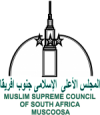Welcome to Provincial Executive Committee of Muslim Supreme Council of South Africa ( MUSCOOSA) for Eastern Cape province comprised of Provincial Mufti, Regional Representatives who are leaders of Municipalities and Districts that makes up Eastern Cape Province Called Municipal Qadhi or District Qadhi, and Town representatives.
Each town of a Municipality or District has a leader in Charge of Islam and Muslim affairs who is responsible for Council of Imams and Muadhins of that Municipality or District called Town Representatives who reports to Regional representatives called Municipal Qadhi and District Qadhi, who reports to Provincial Mufti.
The office of Provincial Mufti monitors operations of Regional Representatives called Municiplal Qadhi, District Qadhi and Town Representatives with following Structure:
- Regional Representatives are Heads of Islam Affairs in Municipalities and districts called Municipal Qadhi and Disrict Qadhi. There are representatives in every town that makes a Municipality or District those who report to Municipal Qadhi or District Qadhi.
- Municipal Qadhis and District Qadhis are Deputies of Provincial Muftis, they make part of Provincial Executive Committee headed by Mufti of the Province.
- Provincial Muftis, Municipal Qadhi and District Qadhi all form part of Council of Sheikhs ( Majlisil Ulama).
Municipal Qadhi and District Qadhi coordinate with Mayors office , all town representatives reports back to him. the management has a team of members comprised of:
- Provincial Mufti
- Regional Representatives called Municipal Qadhi and And District Qadhi
- Secretary
- Town Representatives in charge of council of Imams and Muadhins.
- Head of Imams and Muadhins in Municipality and District
- Town Representatives in charge of Council of Imams and Muadhins
Map Showing Municipalities and Districts of Eastern Cape Province

Overview
The Eastern Cape is located on the east coast of South Africa between the Western Cape and KwaZulu-Natal provinces. Inland, it borders the Northern Cape and Free State provinces, as well as Lesotho. The region boasts remarkable natural diversity, ranging from the semi-arid Great Karoo to the forests of the Wild Coast and the Keiskamma Valley, the fertile Langkloof, and the mountainous southern Drakensberg region. The Eastern Cape’s main feature is its spectacular coastline bordering the Indian Ocean.
It covers an area of 168 966km² and has a population of 6 996 976. It is the second-largest province in South Africa by surface area and has the third-largest population. The capital is Bhisho. Other major cities and towns include Port Elizabeth, East London, Grahamstown, Mthatha (previously Umtata), Graaf Reinet, Cradock and Port St Johns.
The Eastern Cape is one of South Africa’s poorest provinces incorporating large areas of South Africa’s former homelands. The Eastern Cape has excellent agricultural and forestry potential. The fertile Langkloof Valley in the south-west has enormous deciduous fruit orchards, while the Karoo interior is an important sheep-farming area. The Alexandria-Grahamstown area produces pineapples, chicory and dairy products, while coffee and tea are cultivated at Magwa. People in the former Transkei region are dependent on the farming of cattle, maize and sorghum.
The metropolitan economies of Port Elizabeth and East London are based primarily on manufacturing, the most important industry being motor manufacturing. The province is the hub of South Africa’s automotive industry.
The Eastern Cape is divided into two metropolitan municipalities (Buffalo City Metropolitan Municipality and Nelson Mandela Bay Metropolitan Municipality) and six district municipalities, which are further subdivided into 31 local municipalities.
